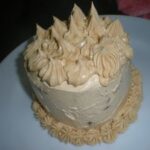I recently published an article urging everyone to at least attempt baking from scratch. I hope at least a few people were inspired to give it a try and see how simple it really can be. Although baking is very simple, there are a few common problems that new bakers often run into. Here are some not-so-secret tips for making perfect baked goods every time.
Tip #1. ALWAYS use unsalted butter. Salted butter might taste better on toast, but it can very easily ruin a batch of cookies or a cake. Almost every recipe calls for salt, since it is a flavor enhancer. However, if you are using salted butter there is no way to control how much salt is actually going into your recipe. Get the unsalted butter and then add the appropriate amount of salt on your own. Trust me, it will make a big difference.
Tip #2. Read directions carefully and follow them exactly. People often use a “dump and stir” approach to baking and then wonder why things never taste quite right. When baking cookies or brownies, often you will need to mix dry ingredients and wet ingredients separately and then add the dry to the wet. When making pancakes or waffles however, it is reversed and you add the wet to the dry. Both methods are for good reason depending on the type of batter you are trying to achieve and you will have much better results if you follow the directions stated on your recipe.
Tip #3. Pay attention to the temperature of your ingredients. Often a recipe will ask for an ingredient like butter to be “softened.” This means that you should remove it from the refrigerator and let it sit out at room temperature for a while before you begin to bake. This is very important because if you try to mix the batter or dough with cold butter it will have problems integrating into the mixture. Alternately, when making biscuits or strudel it is important that the butter is not soft because you actually want to have small pieces left intact. Another tricky ingredient is cream cheese. When using cream cheese it is best to make sure that ALL the ingredients are at room temperature before adding them. Cold cream cheese (and even cream cheese with cold ingredients added) tends to be lumpy because it does not mix very easily.
Tip #4. Be aware of the temperature of your kitchen. One classic complaint when making cookies is that they flatten while baking. Often the cause for this is batter that is too warm before it enters the oven. If your kitchen is warm you may want to try putting your batter in the fridge for about 5-10 minutes (depending on the amount of batter) before putting it into the cookie sheet and into the oven. This will give the batter a chance to cool down and avoid problems with melting batter. Also, when making multiple batches of cookies it is important to let the cookie sheet completely cool before putting more batter on. It may seem like you fill up the sheet so fast that it won’t make a difference, but if you look down at the first spoonfuls you put on the cookie sheet, most likely they will have started to melt if you do not give the sheet a chance to cool.
Tip #5. Know your oven! Do not trust the dial to tell you what the temperature is. Many ovens internal temperature varies slightly from the external readout. In the case of my parents’ oven it was a much larger difference of almost 100 degrees! This is a common problem with older appliances, but can happen in a newer oven as well. There is a very cheap and simple solution to this problem. Simply buy a small oven thermometer that hangs inside the oven and displays the temperature. Preheat your oven before starting to bake your items and always confirm the temperature with the internal thermometer so that your cooking times will be accurate. Nothing will mess up a perfect batch of cookies quicker than being baked at 400 degrees when you think they are cooking at 350.
I hope that these tips will help you to avoid some of the common pitfalls of the new baker. Just remember that everyone is bound to make mistakes when they are first attempting something so if that chocolate souffle doesn’t turn out perfectly the first time, don’t be afraid to try again. Don’t be scared off by recipes that sound complicated. You just might be surprised at how simple some of those restaurant quality desserts really are and there is nothing better than enjoying a decadent dessert (or just a really great brownie!) that you made yourself!







